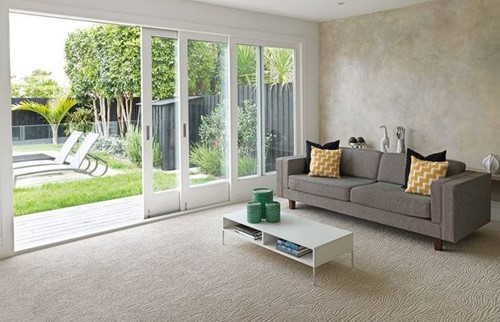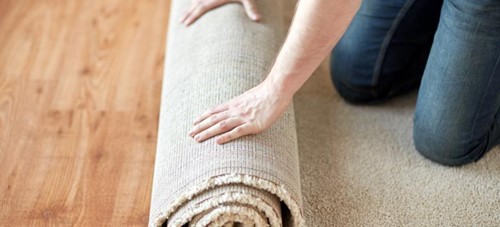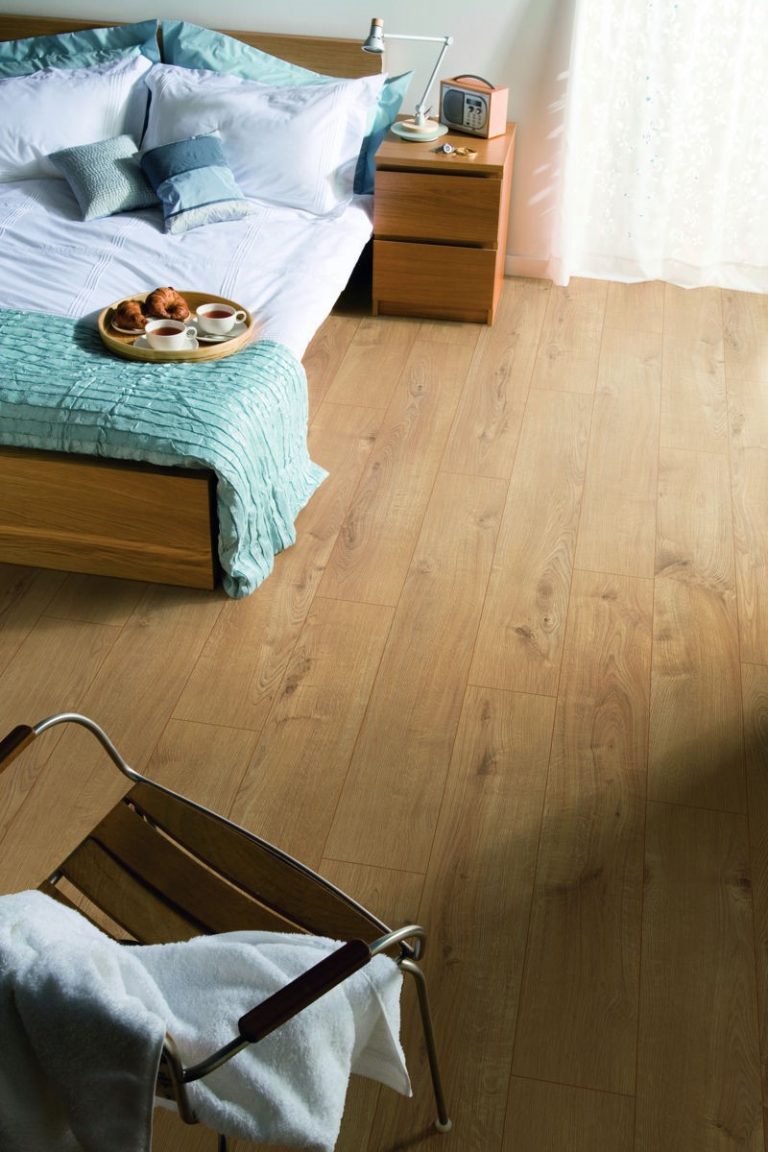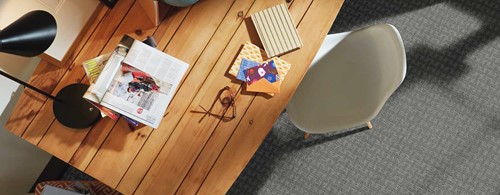10 tips for choosing the right carpet

10 tips for choosing the right carpet
1. Choosing the right colour
Colour is largely responsible for creating the mood of a room – flooring is the second largest area after your walls. If you are renovating or building new, start from the floor up, picking the colour of your carpet first. This will give you a base palette to work from in terms of choosing colour for everything else in your home from walls to tiles/hard flooring to furniture. If you’re only re-carpeting, you’ll want your carpet to work back with the wall colour/curtains or some key pieces of furniture in the room.
Keep in mind that darker colours absorb light and can make a room appear smaller – ideal if you want to make a large room appear cosier. Lighter colours reflect the light and create a sense of spaciousness. Think about your lifestyle when choosing a carpet colour too – light carpet may show kids muddy footprints, dark carpet may show dust more easily or crumbs.
2. Why you should always take a sample home
Make sure you take carpet samples home and see how the colour works in both daylight and artificial light against all the key interior pieces i.e. walls, sofa, curtains, bed etc. Carpets can generally appear around 20% lighter on the floor when laid compared to a small sample!
3. Always check the grading
If you’re after a durable carpet you can trust to perform, the best way to measure this is by looking for one with an independent grading i.e. from the Australian Carpet Classification Scheme (ACCS). The carpet should be graded ‘extra heavy duty’ for residential homes. And if you’re carpeting stairs, make sure it has a stairs grading too.
Under this scheme, carpets are also given ‘star’ grading’s, just like a hotel or restaurant. The best carpet star grading is 6 – so always look for the words ‘Residential Extra Heavy Duty + Stairs 6 Stars’ as well as the ACCS logo on the back of a carpet sample. Carpet manufacturers have no influence over what grading their carpets receive (apart from trying to make the best quality carpet in the first place!), hence why it is a credible and truly independent source of information that you can trust.
4. Price – does it really matter?
Carpet is one of the most affordable flooring options you can have – even when you take into account installation and underlay costs. Make sure you compare apples with apples when evaluating the costs of any flooring. Carpet can often be quoted in linear metres not square metres (a linear metre is the width of a standard carpet roll – 3.66m). To find out the square metre price, simply divide the linear metre price by 3.66.
When it comes to carpet, price (and the grading!) is an indicator of quality. If you’re planning to stay in your home for any length of time, you’ll need a carpet that will last the distance. Buying carpet is similar to buying a bed – you only do it once every ten years or so, and you need reassurance that the initial investment will be worth it in the long run i.e. will still look and feel great in ten years, not scruffy after two. So while price is a critical decision factor, you need to be confident that saving a few dollars now, won’t lead to disappointment in the future.
5. Choosing the best carpet fibre for your home and lifestyle
Carpet is available in 100% wool, wool and nylon mixes and many different synthetic fibres. It’s key to note that neither fibre i.e. wool vs synthetic is better than the other – both have their strengths and weaknesses. A general rule of thumb once again comes back to price (and the grading) – you get what you pay for in terms of quality and performance, irrespective of fibre type.
But if you’re tossing up between wool and synthetic carpet, think about your home and your lifestyle. Does your home have large windows or doors exposed to lots of sun? If yes, a solution-dyed nylon carpet may be best as they generally carry strong fade resistant warranties. If you want a house that’s warmer in winter, cooler in summer and great for those with asthma, a wool carpet is the best option. Stain resistance is another common feature people look for in carpets – and both wool and synthetic carpets meet this criteria. Synthetic carpets may carry stain resistant warranties, but it’s important to remember that wool carpets are naturally stain resistant. This is due to the surface of wool having a very thin, waxy, lipid coating that’s chemically bonded to the surface – so if you get to a common stain such as beer or wine quickly, you should be able to get it out.
6. Cut pile
All cut pile carpets, particularly plush pile carpets will develop lighter or darker patches over time. Known as “shading”, it is caused by the permanent bending of the carpet pile fibres which then reflect the light differently. In this respect, cut pile carpets are very comparable to other natural textiles such as suede and velvet – which also show light and dark areas and are appreciated for this very quality. The extent to which shading occurs cannot be accurately predicted or prevented and is most often related to the location of use. Shading will not affect the durability of your carpet.
A cut pile carpet generally has a more luxurious feel than other styles of carpet. Cut pile carpets can vary from a resilient hard twist (like a ‘perm’ to hold the twist in), to a softer plush pile (where the fibres stand up straight) or a deeply sensuous shagpile. Cut pile carpets do show footprints more readily which can vacuum out.
7. Loop pile
Loop pile carpets can offer a classic or casual look depending on the style i.e. some have a formal, linear look, some have a ribbed pattern giving them a sisal look, others are very textured and chunky and some have random loops giving a casual feel. Loop pile carpets are easy care, don’t show footprints and are particularly suited to busy homes or those with young children. If you have pets, in particular cats that like to stretch and claw the carpet at the same time, avoid buying a loop pile carpet. Cats may pull the loops and cause inherent damage – hence why a cut pile would be the best option.
Textured loop pile carpets have a variation in the height of the loops, providing added interest and texture on the floor. They’re also a great option for busy households as most have excellent soil hiding properties.
8. Cut and loop pile
These carpets are a clever combination of cut pile and loop pile construction – the cut pile contrasting with the loops to create a distinctive pattern which will retain its crispness on the floor. A mix of textures here creates added interest and (depending on the pattern) can range from the boldly dramatic to a classic and tailored look. When the contrasting textures create a light and dark pattern, they are less likely to show footprints.
9. A carpet to suit your lifestyle
As mentioned, always think about the way you (and your family/partner) live when buying carpet. If you have a young family and/or pets then look for a durable (ACCS Residential Extra Heavy Duty + Stairs 6 Star) carpet in a forgiving colour i.e. a textured loop pile or a quality hardtwist cut pile in a subtle blend of colours. If you’re a couple looking for a touch of luxury, you might go for a plush pile in a flat colour. If you’re an entertainer, a combination cut and loop pile in mid to dark tones or a stippled cut pile would suit. For high traffic areas such as hallways, a loop pile or hardtwist cut pile (with the same grading above) is best. Studies have shown that a quality carpet can also absorb any ambient noise within a home and scraping noises from furniture by up to 55%! Great if your kids love to run around indoors.
10. Caring for your carpet
Looking after your carpet is actually very easy – vacuum regularly (once or twice a week) and always attend to spills or stains immediately. White paper towels are the best for absorbing liquid spills – they won’t push the liquid down into the carpet. Keep dabbing until you can see that it’s all gone – you may need a little bit of water to help this. The key thing to remember is NOT to rub, scrub, brush or massage your carpet when it’s wet – this will damage the carpet and can spread the stain further. Also stay away from drowning the carpet in water as that will have the same damaging result. And if you can, get a professional steam clean at least every two years – this helps revive the pile and removes inground dirt that can damage the carpet pile at the base.












